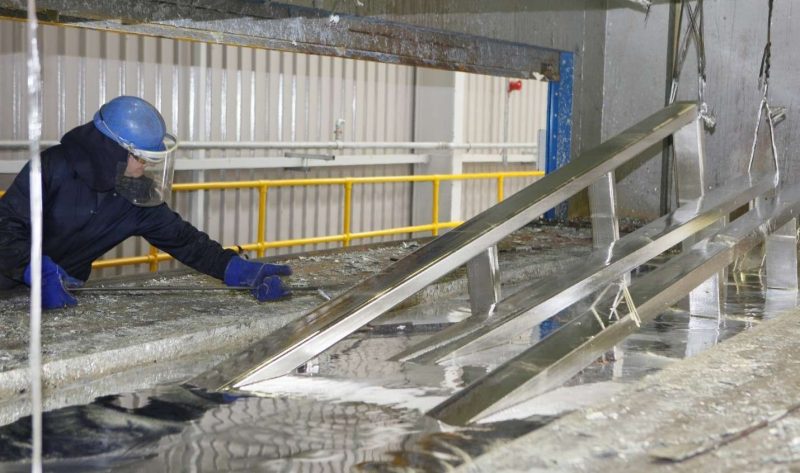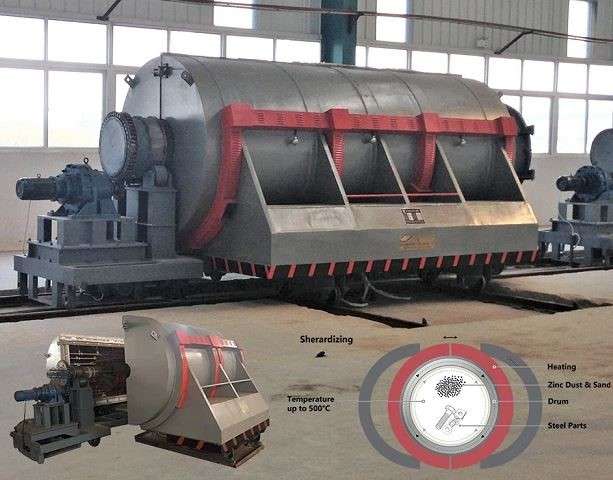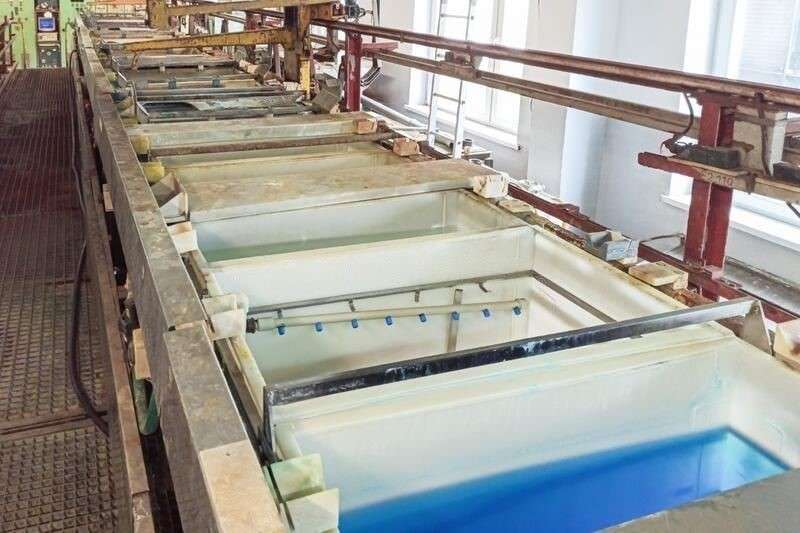
The galvanization process
“Durability” is a crucial aspect of any manufacturing process. It refers to the lifespan of any material or manufactured parts. Manufacturers apply various surface finishing or related techniques to optimize the lifespan of materials or parts, and galvanization is one of them.
Galvanization is a popular manufacturing approach used to protect metal and parts from environmental effects, such as corrosion, wear, tear, and scratches.
This article will cover every aspect of the galvanization process you need to know, including types, advantages, disadvantages, applications, and many more.
What is the Galvanization Process?
Galvanization refers to coating a thin protective layer on the surface of metallic parts. It is usually used on the iron or steel surface as a barrier from corrosive elements and environmental effects. Although the fundamental purpose of galvanization is protection from corrosion and possible erosion, it also enhances some original properties of substrate material, such as mechanical strength and scratch resistance.
The general technique of the galvanization process involves immersion of substrate (metal to be coated) into a molten zinc bath. The temperature of the process ranges from 435–530 ° C. Metallurgical bonding occurs between the substrate and zinc bath at high temperatures that last extensive periods (Peng Bicao, 2008).
However, besides the immersion (or hot-dipping) method, there are other approaches for galvanization. In the next section,
We will discuss various galvanization methods, including hot-dipping.
Types of Galvanization Process
Based on the applied method and procedure, galvanization is divided into four types, Hot-dip galvanizing, Sherardizing, Electroplating, and Spray-painting.
1. Hot-dip galvanization
The hot dip is the most frequently used galvanization method in the manufacturing industry. This method is compatible with iron and steel alloys. The process involves the immersion of iron or steel into a molten bath of zinc that reacts and forms a zinc-iron alloy, which bonds to the surface of the metal. Then, zinc forms the coating layer through metallurgical bonding.
Let’s understand in-depth the detailed procedure involved in hot-dip galvanization:
Step1: Cleaning of surface
The process starts with surface cleaning the substrate, using solvents to remove any dirt, oil, or other contaminants. In addition, rust and surface defects are cleaned with an abrasive blast.
Step2: Immersion in a zinc bath
The temperature of the zinc bath is typically around 435-530°C. The metal is left in the bath for 4-8 minutes, depending on the thickness of the zinc coating desired. The longer the metal is dipped in the bath, the thicker the layer will be (An Introduction to the Hot Dip Galvanizing Process, 2012).
Step3: Post-treatment of galvanized metal
The substrate is withdrawn from the zinc bath after being submerged in it. For quality control, it inspected for any defects in the coating. If the galvanization coating is not up to the desired standard, it is recoated. Then, galvanized metal goes through rinsing, passivating, and sometimes oiling.
2. Sherardizing

Sherardizing machine
Like the hot-dipping method, sherardizing creates the protective zinc layer on the surface of metals, such as iron and steel. But, the process involves heating substrate metal with zinc powder in airtight-condition. The heating of substrate metal with zinc powder results in the thermal diffusion of powder on the surface. The temperature of the heating container is controlled so that the melting point of zinc is not reached, which ranges between 320-500ºC (Sherardizing, 2018).
Sherardizing methods create a zinc layer of uniform thickness around the surface with a strong bond. It lasts for a long time and prevents corrosion and abrasion. While hot-dip galvanization is limited to iron and steel alloys, sherardizing works with aluminum and magnesium. It is mainly utilized for small-scale parts.
3. Electroplating

Electroplating setup
Electroplating (also referred to as electro-galvanization) is another popular approach to galvanization. It involves the creation of a thin protective coating with the electro-deposition of zinc.
The working of electro-galvanization is based on the principle of electrolysis. Substrate and zinc are placed in the electrolyte solution containing zinc ions. A substrate is connected to the negative terminal and zinc to the positive terminal of the DC power source. The flow of electric current causes the zinc metal ions to be reduced and deposited onto the substrate, creating a thin coating of the plating metal. It also provides aesthetic appeal along with corrosion resistance.
This method of zinc coating is usually used for small-size parts or products, such as fasteners, screws, bolts, wires, automotive parts, and many more.
4. Spray-painting
This is the traditional and straightforward method of galvanization. The process involves depositing a zinc layer with a spray gun or traditional painting with zinc-rich paints.
It is applicable for small sheets to large structural components. In addition, machined parts can be galvanized by simple spraying of zinc.
Try Prolean Now!
What Are the Advantages of Galvanization?
Galvanization is the best way to protect small to large-scale products and structures from corrosion and surface degradation. There are several advantages of applying galvanization coating on metal parts.
- Protection from corrosion: Galvanization provides superior protection to the surface of iron, steel, or other metals. Zinc coating isolates the original parts from moisture, making them highly resistant to corrosion.
- Low cost: Galvanization is relatively inexpensive corrosion protection compared to other forms of surface finishing. It does not require expensive equipment and a complicated setup.
- Enhance the properties: The galvanization process increase the strength, toughness, abrasion resistance, and other properties of the substrate at a minor level.
- Metallic hygiene: The zinc layer on the surface makes it easy to clean, and smoothness prevents dust deposition.
- Long life: The zinc coating applied with galvanization lasts for almost 20 to 25 years, regardless of any environmental exposure (10 REAL BENEFITS OF GALVANIZED STEEL).
- Easy to repair: It is relatively easy to repair the affected area by patching it with zinc-rich paint or another coating.
- Easy inspection: Galvanization can be checked visually. It has simple ways to check the coating, which consist of destructive thickness testing techniques.
- Aesthetic appeal: Galvanization offers an attractive, shiny, silver look to the metal surface.
What Are the Disadvantages of Galvanization?
The following are the fundamental drawbacks of the galvanization process;
- Galvanization is limited to very few metals and alloys, such as iron and steel. It is not suitable for some common engineering materials like aluminum alloys.
- It is not effective in extremely-acidic & salty environments.
- The zinc coating can be damaged at high operating temperatures and lose effectiveness.
- It protects the surface from corrosion for a long time, but there are phenomenon called “white rust”. If the zinc surface is left exposed to moisture for prolonged periods, it loses its aesthetic appeal.
Applications of Galvanization

Galvanized parts
Galvanization is not only applied to manufactured parts; galvanized-steel sheets are trendy in the manufacturing industry to use as a raw metal for machining. It has various applications, from outdoor furniture to automotive parts.
Let’s discuss the applications of galvanization in detail;
- Automotive
Galvanization is used in several parts of the automotive body to prevent rust and corrosion. Additionally, about 80 percent of the average car body, known as the body-in-white (BIW), now consists of galvanized sheets (Industry applications: Galvanization).
The common galvanization parts include the underbody, wheels, engine compartment, exhaust system, suspension components, and many more.
- Construction
Hot-dip galvanization has been a reliable corrosion protection technique in construction for centuries. Galvanized steel is used in the construction of buildings, bridges, fencing, staircase, gutters, steel joists, tubing, poles, and many more applications. Furthermore, it is also applicable in steelwork, cladding, and roofing.
- Agriculture
Galvanization is used in various agricultural applications due to its durability and resistance to corrosion. Some examples include barns & shed structures, fencing, irrigation systems, and greenhouses.
- Marine
Because of its superior corrosion resistance, galvanized steel is a prominent material in the marine industry.
- It is applied on various metal surfaces on ships, including the hull, decks, and superstructure.
- Offshore structures, such as offshore oil and gas rigs.
- Marine equipment, such as anchors, chains, and buoys.
- Household applications
Galvanized zinc coatings protect metal surfaces in household items such as outdoor furniture, window and door frames, garbage cans, and lighting fixtures.
- Electrical and electronics
Galvanization is used in the protection of electrical components and wiring from corrosion. Telecommunication towers, motors, grounding systems, and many more also contain galvanization coating,
- Piping
The galvanized coating protects steel pipes used for water & gas distribution systems, mining, oil& gas, and many more industries. It facilitates the long life span of the pipes by preventing corrosion.
Summing Up
In short, galvanization is a process that helps protect metal parts from rust and other forms of corrosion. Galvanizing service is commonly used in various industries and can improve the longevity of products. Galvanized steel is also used as a raw material in different manufacturing processes.
Applying galvanization on your parts can be an efficient and cost-effective approach to surface protection. However, you need to choose the correct method and consider various circumstances. ProleanTech has cutting-edge equipment and all the required expertise for quality galvanized coating. Contact us if you are looking for galvanization or other manufacturing services for your project.
Bibliography
- (n.d.). 10 REAL BENEFITS OF GALVANIZED STEEL. Galvanizers association Australia, from https://gaa.com.au/.
- (2012). An Introduction to the Hot Dip Galvanizing Process. Galvanizer, from http://www.galvanizers.co.in/.
- (n.d.). Industry applications: Galvanization. International Galvanizing, Inc, from https://www.intlgalvanizing.com/.
- Peng Bicao, W. J. (2008). Effects of zinc bath temperature on the coatings of hot-dip galvanizing. Surface and Coating Technology.
- (2018). Corrospionpedia, from https://www.corrosionpedia.com/.
FAQ
What is the general technique of the galvanization process?
The general technique of the galvanization process involves immersion of substrate into a molten zinc bath at a temperature of 435-530°C.
What are the common types of achieving galvanization?
The common types of galvanization are hot-dipping, sherardizing, electroplating, and traditional painting.
Why use galvanization?
Galvanization provides a long-lasting zinc coating on a metal surface that protects from corrosion, abrasion, and other external effects. It is a cost-effective and quick process.
What are the applications of galvanization?
Galvanization applies to small fasteners to large structural components. It is also used in automotive, marine, electrical, and many other industries.




Thanks for clarifying this subject. The clarity in your message is actually merely excellent, as well
as I can not stand by to check out more from you.
Nicely discussed the galvanization in short content!
Thank you for your comment!
We know that the essence of a intercourse doll lies in its ability , cotact prolean for a mirror human-like traits both of those in visual appearance and touch.
Thanks for this seamless discussion on Galvanization process ! Do you think hot-dipping galvanization is suitable for agricultural parts?
Yes, hot-dipping galvanization creates protective & durable layers in the agricultural parts! you can apply hot-dipping galvanization in CNC machined and sheet metal items.
Hello There. I found your blog on google search. This is an extremely well written article.
Thank you Rajat !
Nice content flow, after this I go over a few of the articles about finishing technology published on your web site, I honestly like your information’s on this topic.
Thank you for your kind words!